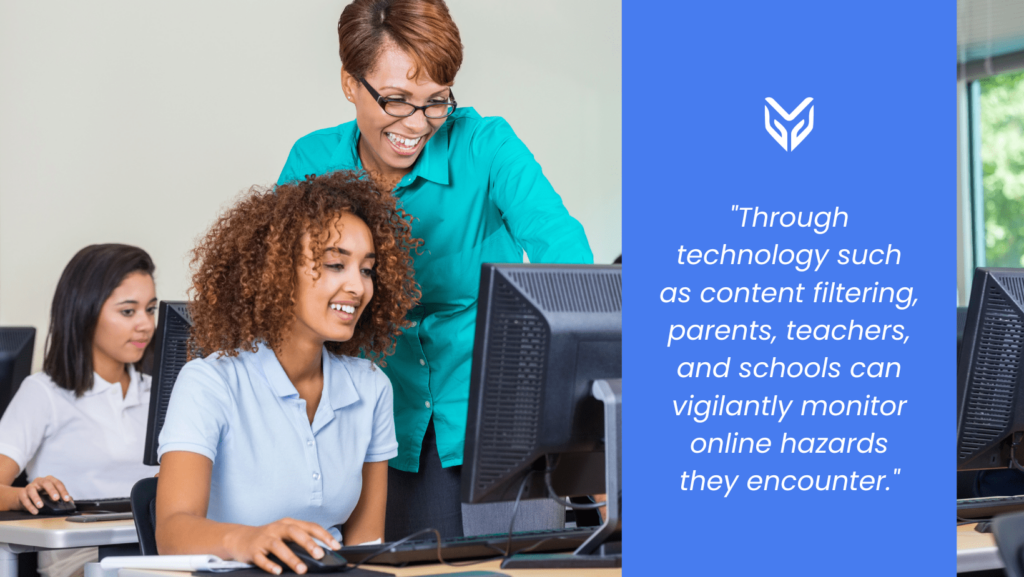NEWS
The Pros and Cons of Using a Content Filter

A web content filter is a solution installed on a computer system to restrict access to certain types of content. The term can refer to various filtering types, two of the common being filtering by keywords and by categories. School web filtering has become more popular recently as parents become more concerned about their children viewing inappropriate material online. And let’s not overlook the various opportunities filtering content allows for educational purposes.
While the internet today stores countless information on practically any subject you can imagine, it also comes with a downside. The availability of all types of content can be troubling when considering how much children regularly access the internet – not to mention how many children access the internet without any supervision. One of the solutions is using internet filters, which are commonly used in schools, businesses, and libraries, to prevent access to objectionable or harmful information. And while this sounds like a great idea, there are many pros and cons associated with using content filtering.
The pros and cons of using a web filter surely differ based on whom you ask. The pros of using one include the security, privacy, and protection that is needed while surfing the web: less time spent online looking for sites to view and more time spent doing other productive things such as working or being with family. The cons include lack of trust in the filter, inability to access websites that may contain important information, and even worse yet, unreliable filtering could cause more harm than good by not keeping us safe from viruses, spam, phishing emails, etc. Here are some additional pros and cons of content filtering.
Pro #1: Web Content Filters Block Sites That Are Inappropriate for Children
Nobody wants children to stumble across improper content, such as pornography, violence, and hate content. Many parents see content filtering as necessary in protecting their youth by blocking unwanted material. It also comes in very handy in schools, creating a safe and secure learning environment, reducing distractions, preventing off-task behavior, and boosting students’ productivity.

Children enjoying a safe browsing environment that helps them focus on learning without distracting them with unneeded websites is surely an important educational advantage. A third benefit is that students can do their homework without looking for resources to assist them in their search for information.
Con #1: Certain Web Content Filtering Techniques May Inadvertently Block Relevant Websites
Some of the most basic web filters can filter inadequately or even excessively, preventing access to reliable educational materials, which limits users’ access to knowledge and their use of online technologies.
Luckily, some content filtering software, such as Blocksi, filters content smartly and flexibly based on categories. It is also applicable to various internet browsers, making it usable to practically all students and educators. It is much more effective than internet filtering software usually used at home because it has more advanced features like keyword blocking, time of day blocking, and category-based site-blocking features. So, students’ web activities are safely supervised while being allowed to actually learn how to use a digital environment.
Pro #2: Content Filters Are Easy to Use
Using content filtering requires no special technological knowledge. And again, it is usually compatible with several web browsers and doesn’t require acquiring additional software. It is also easy to set up and maintain. Often it is even cloud-based, which presents no worries for the user, not burdening them with maintaining their own software.
Cloud-based platforms can effortlessly accommodate evolving network needs and user preferences. Beyond their straightforward setup and implementation, cloud-based software takes no physical space and is the most adaptable. Schools can readily modify filtering policies, add or remove features, and expand resources as necessary without hardware constraints.

Con #2: Content Filters by Themselves Don’t Teach Internet Ethics
Content management software is essential for keeping students from accessing pornographic or otherwise improper content while still giving them access to digital learning resources and genuine research; however, using content filtering on its own doesn’t teach internet ethics. Less thorough filtering can deceive parents and other adults into thinking that children are safe when, in reality, they are not. While it does some part in teaching students digital literacy skills, parents and educators still have to teach them how to become responsible digital citizens of the 21st century.
Using content filters isn’t 100% foolproof, and regular monitoring of children’s internet use is crucial, but the filtering still presents a healthy starting ground for that. Yet again, advanced software, such as Blocksi, allows category-based sophisticated filtering, minimal room for any filtering errors, and allowing multi-layered filtering. By continuously updating databases and machine learning algorithms, educators can stay ahead of emerging threats and trends. This dynamic nature ensures schools remain protected against evolving online risks without constant manual intervention.
Pro #3: Content Filtering Reduces Cyberbullying
According to Security.org research, more than 20% of children have already experienced cyberbullying. Seeing that it is a serious problem resulting in serious consequences, it must be tackled with urgency.
Through technology such as content filtering, parents, teachers, and schools can vigilantly monitor online hazards they encounter. They can then take appropriate action based on the insights filtering gives them. This covers various forms of cyberbullying. Content filters detect hateful speech and make it easier to stop the bullying once it starts.

Content filtering is a crucial function in the educational setting, especially out of a moral commitment to protect children; however, it’s equally crucial to choose and use sophisticated software to keep in mind that the filtering doesn’t go overboard and limits students’ capacity to learn.
SOURCES
[1] Cyberbullying: Twenty Crucial Statistics for 2022





